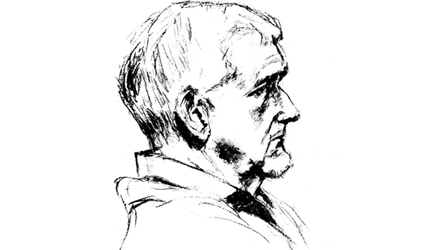In this area, over a period of time, I will attempt to demonstrate various forms of poetry that writers can use to express themselves. I do not set myself up as an expert so welcome any comment that might contribute to this. Blank verse or free verse, my preferred form, is very much dependent on the poets own style, and may sometimes incorporate any element of the forms illustrated.
Click on each type heading to see an example of the poem form.
The Villanelle :
Originally a song format, this type of poem is witten in three line stanzas (tercets) of uneven number, with the final stanza as a quatrain (four lines). In addition two refrains from the first stanza are repeated in a specified manner.
The Cinquain:
A format created by the American poet Adelaide Crapsey. A compressive five line poem that is great fun to use, and can help the thought process.
The Sonnet:
The form that we are most used to is the English or Shakespearian Sonnet.
Shakespeare was one of several early sixteenth century poets who developed the Italian Sonnet form into the version that become popular. The form often carries his name as his sonnets in this style have become the most famous in English literature.
The Haiku and The Tanka:
The Haiku is a poem of one tercet, simply three lines in length, containing only seventeen syallables in total. There is no consideration of meter or rhyme, but the syllables must be organised in the specific constaints of five syallables in the first line, seven in the second and then five in the third line.
The Naga-Uta:
The Naga-Uta is an extension of the Haiku into a longer poem. The five, seven, five syllables form repeats as long as the poet requires, and the poem finishes with an extra seven-syllable line.
The Pantoum:
Originally a Malayan form of verse, it was adopted by European poets in the mid 1800’s, although they dropped the Malayan format of the first two lines of each stanza being abut the natural world, and the third and fourth lines being about human interaction. European poets simply used the construction formula.
The Ghazal:
The Ghazal originated in Iran during the 10th Century and takes the form of a series of independently themed couplets, with a consistent meter, The defining feature of the Ghazal is the repetition of a word or phrase that occurs in both lines of the first couplet. The poem length is usually between five to fifteen couplets.
The Ottava Rima:
A fourteenth century Italian origin, the Ottava Rima is an eight-line stanza with an a-b-a-b-a-b-c-c rhyme scheme. Frances stillman in The Poets Manual and Rhyming Dictonary cites Byrons Don Juan as the best known example in the English Language.
The Englyn–
specifically The Englyn Unodl Union or straight one-rhyme Englyn.
Another form of poetry with an emphasis on syllable counting, this time from Welsh Poetry.
The Sestina —
A late twelfth century poetry form, thought to have originated in France, and used by the Italian poets Petrach and Dante , from whom it received its Italian name. The main feature of the poem six stanzas of six lines each is the repeated use throughout each stanza of the six line end words or ‘teleutons’. The poem ends with a three line stanza , and two of the teleutons are used in each line of this tercet.
